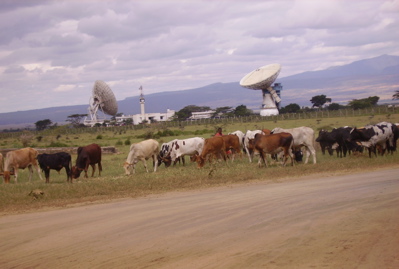DECT phones
ø
My friend Bre was telling me about some of the cool talks he heard at CCC in Berlin last month, and somehow we got on the topic of dect phones at the conference, and since I’m writing a paper at the moment about mobile social software that addresses event-based social coordination, I got really interested.
So, DECT is Digital Enhanced Cordless Telecommunications, and basically it’s a phone that looks like one of the cordless walkaround phones we used to have in our homes before we all cancelled our land lines and started relying on mobiles (though, in my typical luddite fashion, I actually still have a land line.)
For about EUR$25 you could buy a DECT phone at the conference, get a number (Bre’s was BREX) which got published on a wiki, and make free calls to anyone else who had signed up for the service. You had to be close enough to a base station to make it work, but Voip international calls were also free from the phones.
At the moment I’m writing up some of the results from a study I did at Microsoft Research last spring on SLAM and SMS-based social networking that basically showed that MoSoSo was great for group-based social coordination, but that for other kinds of everyday life activities, the application had limited value for most groups. The group in our study that found the most utility for SLAM used it during a music festival — a short-term event when they wanted to collectively organize with relative strangers, folks with whom they might not want to have shared their actual cell number. DECT phones seem like a total analogue, a technology-centric (rather than software centric) solution to short-term social coordination.
I imagining all the places I’d want this kind of a system.


